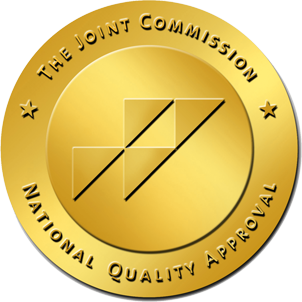
At 10 Acre Ranch, we believe that healing from drug or alcohol addiction requires more than just abstinence—it takes a full-body approach to restore physical health, mental clarity, and emotional resilience. One of the most powerful and often overlooked tools in recovery is exercise.
Regular physical activity is proven to benefit nearly every system in the body. It improves heart health, flushes toxins, reduces stress, boosts mood, and even rewires brain pathways affected by substance use. Whether you’re walking, lifting weights, or practicing yoga, movement creates structure, fosters confidence, and helps reduce cravings naturally.
In this article, we explore how exercise supports addiction recovery for both men and women—including the science behind it, the mental and emotional benefits, and how it fits into a holistic approach to healing.
How Exercise Rewires the Addicted Brain
Addiction changes brain chemistry, particularly in the dopamine system—the pathway responsible for motivation, pleasure, and reward. Over time, the brain becomes dependent on substances to feel “normal.”
Fortunately, exercise helps retrain the brain by:
- Increasing dopamine and endorphins, creating a natural high;
- Enhancing mood, motivation, and stress resilience;
- Rebuilding damaged brain regions through neurogenesis.
Studies published in journals like Biological Psychiatry show that animals with access to exercise had fewer drug cravings and less neurological damage than sedentary ones.
In humans, a 2010 Scandinavian Journal of Public Health study found that people in rehab who incorporated physical activity into their routines reported reduced drug intake, more energy, and greater self-confidence.
Healing the Brain: Neurogenesis in Recovery
Drugs and alcohol can damage areas of the brain involved in decision-making, memory, and emotional regulation. Men and women in recovery often struggle with brain fog, poor concentration, and mood swings.
The good news? Exercise supports brain healing.
Through aerobic activity, the brain stimulates neurogenesis (the creation of new brain cells), particularly in the hippocampus and prefrontal cortex. This leads to better thinking, fewer cravings, and greater emotional control.
Drugs and alcohol can damage areas of the brain involved in decision-making, memory, and emotional regulation. Men and women in recovery often struggle with brain fog, poor concentration, and mood swings.
The good news? Exercise supports brain healing.
Through aerobic activity, the brain stimulates neurogenesis (the creation of new brain cells), particularly in the hippocampus and prefrontal cortex. This leads to better thinking, fewer cravings, and greater emotional control.
According to neuroscience research, regular movement contributes to long-term improvements in cognitive function—especially when paired with therapy and healthy nutrition.
Get Your Questions Answered
Our expert & caring staff on site are available 24/7. Call us today.
Replacing Addiction with Healthy Habits
Recovery isn’t just about abstaining—it’s about building a life that no longer needs drugs or alcohol to feel fulfilling. Exercise fills the void that substances leave behind.
It offers:
- Daily structure and routine;
- A sense of progress and purpose;
- A healthy outlet for stress, anger, and boredom;
- A natural boost in self-esteem and body image.
From solo workouts to team sports, physical activity gives people a new identity beyond addiction.

Boosting Confidence & Emotional Strength
Addiction often damages self-worth and causes feelings of shame, hopelessness, and defeat. Exercise helps rebuild confidence from the inside out.
As individuals begin to:
- Improve strength and stamina
- Set and achieve fitness goals
- Feel and look better physically
- Experience pride in their progress
…they start believing in their ability to stay sober and reclaim their lives.
Mind-Body Practices for Balance & Stress Relief
Mind-body exercises such as yoga, tai chi, and Pilates are particularly powerful tools in recovery. They help:
- Calm the nervous system
- Regulate breathing and heart rate
- Reduce stress and anxiety
- Promote mindfulness and emotional awareness
These practices can benefit anyone—regardless of gender, fitness level, or background.
Is There a Risk of Exercise Addiction?
While exercise is overwhelmingly beneficial, it’s possible to overdo it—especially for those with histories of eating disorders, perfectionism, or obsessive behaviors.
Signs of compulsive or unhealthy exercise include:
- Feeling guilty when missing workouts
- Exercising despite injury or illness
- Using exercise to “earn” food or avoid emotions
- Letting exercise interfere with relationships or responsibilities
Balance is key. Incorporate rest days, stay connected to a support network, and talk to a counselor or healthcare provider about your fitness goals.

A Holistic Approach to Treatment for Everyone
At 10 Acre Ranch, we believe recovery should treat the whole person—mind, body, and spirit. That’s why our men’s and women’s programs include physical fitness, recreation, and group activities as part of a comprehensive, evidence-based treatment plan. Whether it’s a walk around the grounds, strength training, or group yoga, our clients build healthy routines that support lasting recovery—one step at a time.
If you or someone you love is struggling with addiction, call 866-274-9892 today to learn more about our holistic rehab programs for adults. At 10 Acre Ranch, we help men and women rediscover their strength—physically, mentally, and emotionally—through a lifestyle rooted in movement, mindfulness, and support.
Frequently Asked Questions (FAQ)
Can exercise alone treat addiction?
No. Exercise is a powerful support tool but should always be paired with therapy, medical care, and counseling. It enhances recovery—it doesn’t replace it.
What kind of exercise works best for recovery?
Moderate aerobic activity (like walking or biking), strength training, and mind-body practices (like yoga or tai chi) all help. The best routine is one that’s safe, sustainable, and enjoyable.
When should someone in recovery start exercising?
With medical clearance, many people can begin gentle exercise within the first week of treatment. Activities should be tailored to the person’s physical health and emotional readiness.






